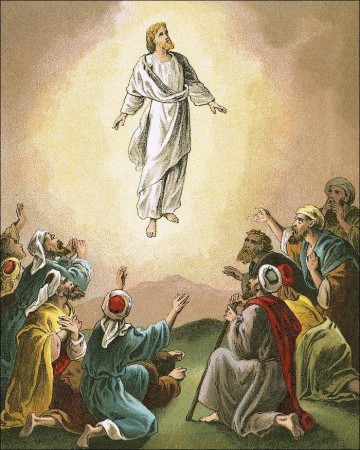The Ascension of Jesus (anglicized from the Vulgate Latin Acts 1:9-11 section title: Ascensio Iesu) is the Christian teaching found in the New Testament that the resurrected Jesus was taken up to Heaven in his resurrected body, in the presence of eleven of his apostles, occurring 40 days after the resurrection. In the biblical narrative, an angel tells the watching disciples that Jesus’ second coming will take place in the same manner as his ascension.
The canonical gospels include two brief descriptions of the ascension of Jesus in Luke 24:50-53 and Mark 16:19. A more detailed account of Jesus’ bodily Ascension into the clouds is then given in the Acts of the Apostles.
The ascension of Jesus is professed in the Nicene Creed and in the Apostles’ Creed. The ascension implies Jesus’ humanity being taken into Heaven. The Feast of the Ascension, celebrated on the 40th day of Easter (always a Thursday), is one of the chief feasts of the Christian year. The feast dates back at least to the later 4th century, as is widely attested. The ascension is one of the five major milestones in the gospel narrative of the life of Jesus, the others being baptism, transfiguration, crucifixion, and resurrection.
By the 6th century the iconography of the ascension in Christian art had been established and by the 9th century ascension scenes were being depicted on domes of churches. Many ascension scenes have two parts, an upper (Heavenly) part and a lower (earthly) part. The ascending Jesus is often shown blessing with his right hand – directed towards the earthly group below him and signifying that he is blessing the entire Church.
Related Link: View the Holy Bible website
Visits: 207



